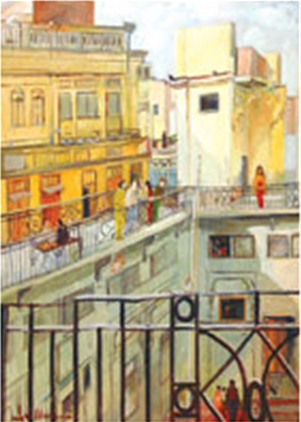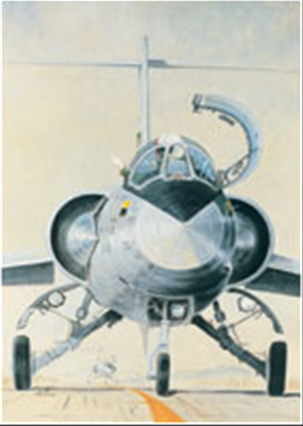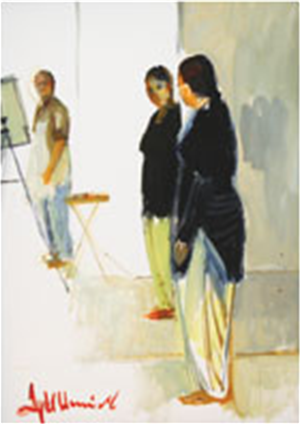Iqbal Hussain
This is a collection of articles archived for the excellence of their content. Readers will be able to edit existing articles and post new articles directly |
Iqbal Hussain
Bitter Harvest
By Shamim Akhter
Iqbal Hussain’s art has its own ground to stand on and declares its own unique identity. It does not depend on political, economic and cultural models of modernity developed in the west and yet relates to humanity at large.
His work is the expression of a vital insight into reality and portrayal of facts; thus it becomes an expression of the ‘physico-social’ milieu.
Being a creative artist, Hussain consciously or unconsciously aims to express a feeling perfectly. At the same time he seeks to build an object, which possesses a certain intrinsic perceptual characteristic, a totality of expressed feeling. His woman on canvas, whether nude or clothed, can be described as a four-dimensional object. Besides possessing material, form and expression, it contains multiple meanings.
Hussain’s art sprouts from the physical world which is very much his own. Intuition in his art is an aspiration enclosed within the circle of a representation. At the expressive level, it is usually gloomy, satiric and bitter; yet it is beautiful because it conveys successful expressions, thus becoming a source of deep and invigorating satisfaction for him. Conversion of his subjective tortures into objective perceptual characteristics, which are vivid, forceful and interesting, earns him tranquillity as well as the value of technical success.
His works with eloquence without flatulence and magnificence without exaggeration imply that he handles his bitterness and gall with tact and ingenuity, careful thought and inventiveness. Referential in many directions, they also addresses truth of bitterness and pain of the existence of this matriarchic segment of society which is abhorred in daylight in a patriarchal society. Instead of lulling us into forgetfulness, as does sweet and pretty art, he gives us a graphic and immensely vivid realisation of some of the latent withering forces of human life.
His dissonance adds variety and amplitude to the intellectual and emotional appeals. His creative process is a two-fold ‘ideality’ seeking realisation through a two fold actuality within the conditions and possibilities of a ‘physico-social’ environment. His environment is the frame of his total creative process. It enters his creativity at every point. It furnishes him with the vast diversity of things by which his sensitivity is awakened and stimulated, and from which all his symbols are drawn. It also supplies him with occasions, joyous and tragic, besides providing him with a contemporary climate of opinion that indefinitely modifies the quantity and quality of his imaginative thinking as it moves into creative channels.
His latest textured exhibits at Artscene Gallery, Karachi, which centre on his family — wife, daughter, son and his pet as well as his friends and of course landscapes — flow from this modifying force. Whether it is Hussain’s inner landscape or outer scenery, it is a great wealth of content — feelings, ideas, character and personality — lying behind the material surface. His colour tones and lines address his audience. Skilfully he selects and organises these suggestive materials into a functional whole. His artistic expressiveness suggests concrete persons, places, things, incidents, situations or events. His concrete interpretation of representation is based on a selection and marshalling of suggestive details according to his idea, which sprouts from his environment.
Expressiveness of his object is related with sensory qualities and feelings; it is his subject that gives rise to thoughts related with social philosophy. Prostitution and prostitutes has been a favourite subject with poets, writers and painters. Faiz and Sahir Ludhyanwi have made open references to them in their poetry. Likewise, Manto and Ismat have also focused on them in their stories. Some artists in Pakistan have painted the subject from their own angles; but all of them play the role of a spectator in the drama; none of them was born and reared in the milieu.
Their experience was derivative and they never suffered emotionally the way Hussain has. He is made of clay from Heera Mandi. He bears a wounded and scornful face in his self portrait which gives it all away.
Hussain’s work is usually gloomy, satiric and bitter; yet it is beautiful because it conveys successful expressions


